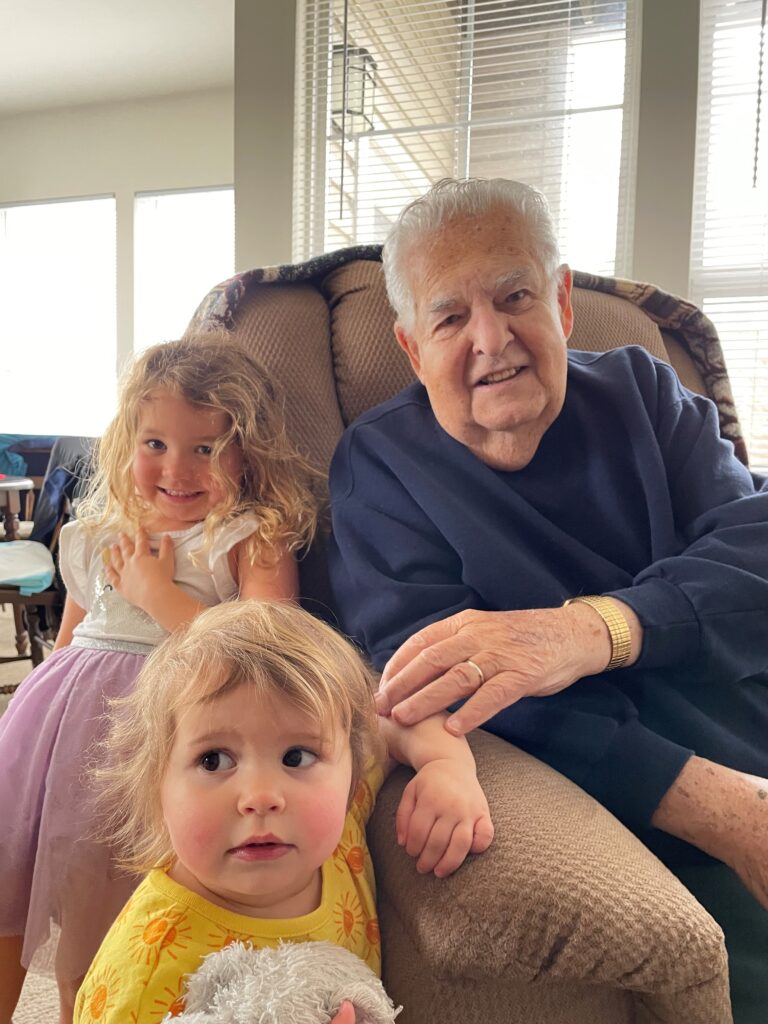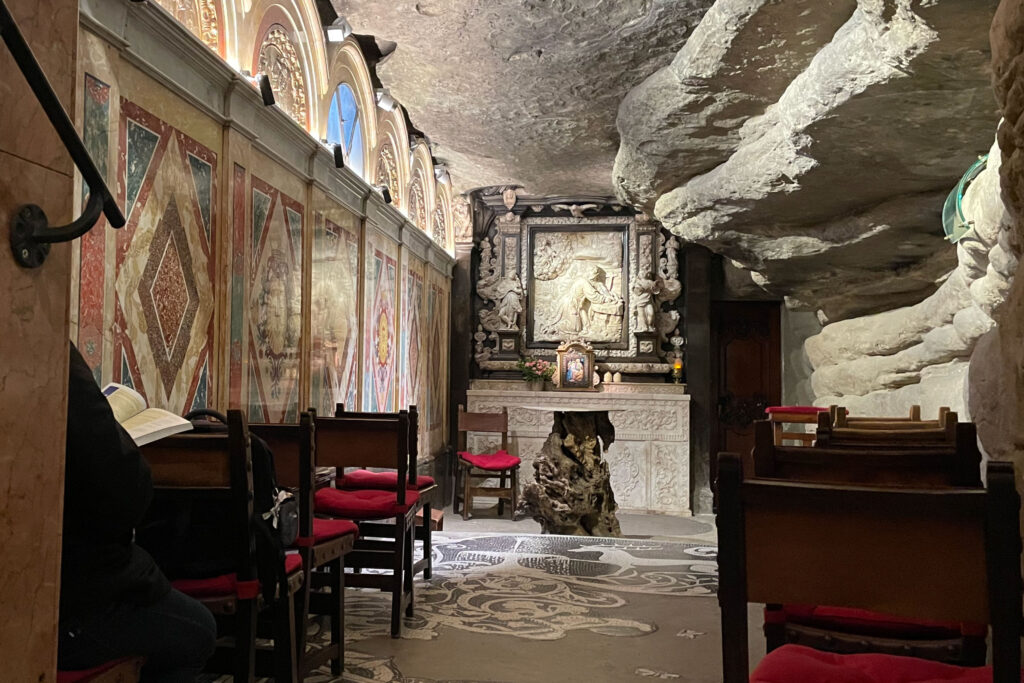My grandfather and I used to wrestle.
He’d visit our home in California with my grandmother – a long flight from New Jersey – and enter the room and declare, “Let’s wrestle.” My five-year-old self would giggle and run at him and try to pin this big man to the ground as he scooped me up and kept me dangling in the air.
That was nearly 30 years ago. But that’s how I still see my grandfather: a big guy with a deeply furrowed brow, a belly laugh and an intimidating presence. A man who’d wag his finger at me for not keeping up with the news – me, a nine-year-old! – and who’d lean in eagerly across the table to hear how’d I’d deftly managed coupons to save a few bucks on the latest video game for Nintendo 64.
My daughters don’t know that man; they never will. My grandfather is nearly 93. He doesn’t wrestle anyone anymore; he has a hard enough time getting up and out of his chair. He still has a hearty laugh and a big goofy grin, but those things are rarer and cut by tears and sorrow in the wake of strokes and deaths and the steady march of time.

He’s intimidating still, but not in the same way he used to be – with his furrowed brow and barrel chest and daily newspaper – and it took my eldest daughter a long time to warm up to him. She didn’t want to give him a kiss, give him a hug; she barely wanted to say hello when we’d visit. She’d hide behind me, her eyes cast downward.
This was nearly devastating to me and my grandfather, that my daughter couldn’t see in this man what I still did, couldn’t see her way to just saying hello. I would try and be patient with her, let her lead the way – forced love is a brittle thing to build a relationship on – but still, I’d encourage her: Say hello. Shake his hand. Give him a wave.
And slowly, slowly, that shyness gave way to hellos and then to handshakes and kisses and hugs. And amazingly, this little girl discovered within herself deep expressions of empathy when she saw her great-grandfather rattled by tears and sadness. She’d wander over of her own accord and give him a hug, hold his hand.
And so, this hard-won affection continues to play out at every visit. She still needs a little prodding, but that’s okay. And her sister – two years younger, meaning the advantage of two years of watching and idolizing her big sister – needs no encouragement at all. She hits the ground running – “Poppop! Poppop!” – and gives the man’s leg a big hug, burying her face into his belly.
And that’s another amazing thing.
I think we do this for one another: We show one another how to love. We lead others to love. And, miraculously, we are the vessels through which others are able to love more: more ferociously, powerfully, unquestionably. An intimidated five-year-old grows up to nudge a shy little three-year-old who finds her own way and unknowingly leads a little sister who barrels down that path with a big goofy grin and outstretched arms.
We show the way to love. We walk with others along that path. And we rejoice when they take off running at a full sprint.
Isn’t that what Jesus did? Didn’t God enter our human story and show us how to love? How to love better? Didn’t Jesus love those whom others found intimidating or off-putting or scary? And didn’t his love – his example, his blazing path – open the way for others to wander along and love all the more?
We’re made in the image and likeness of our God who is love. And we each are given the opportunity to help others love a little more, a little better – even greater than we ourselves yet understand.




